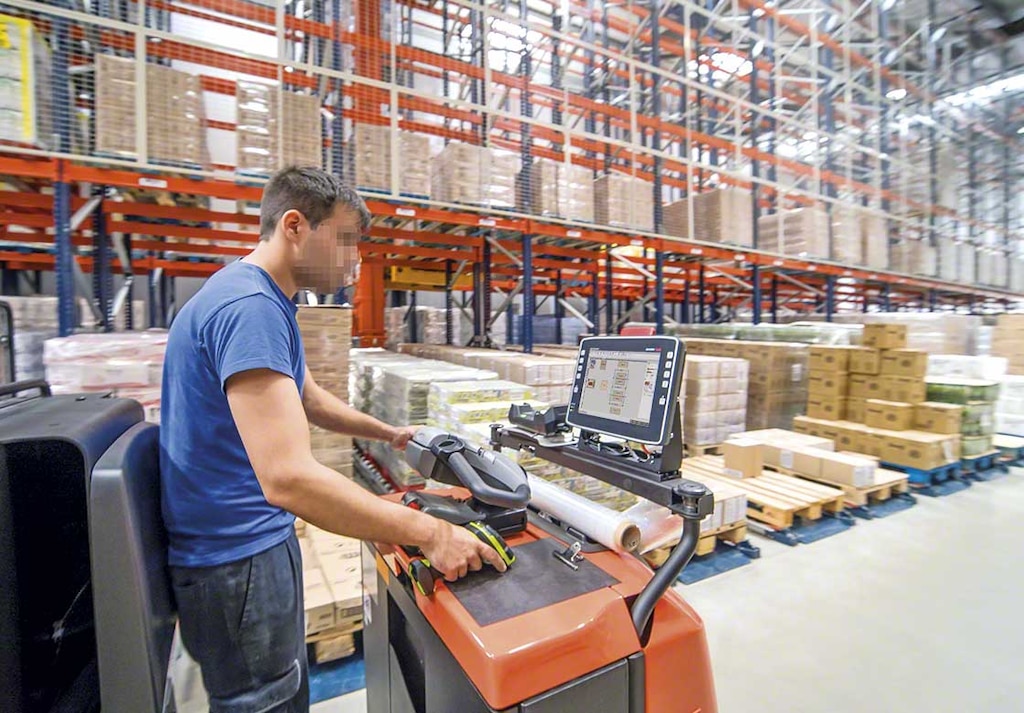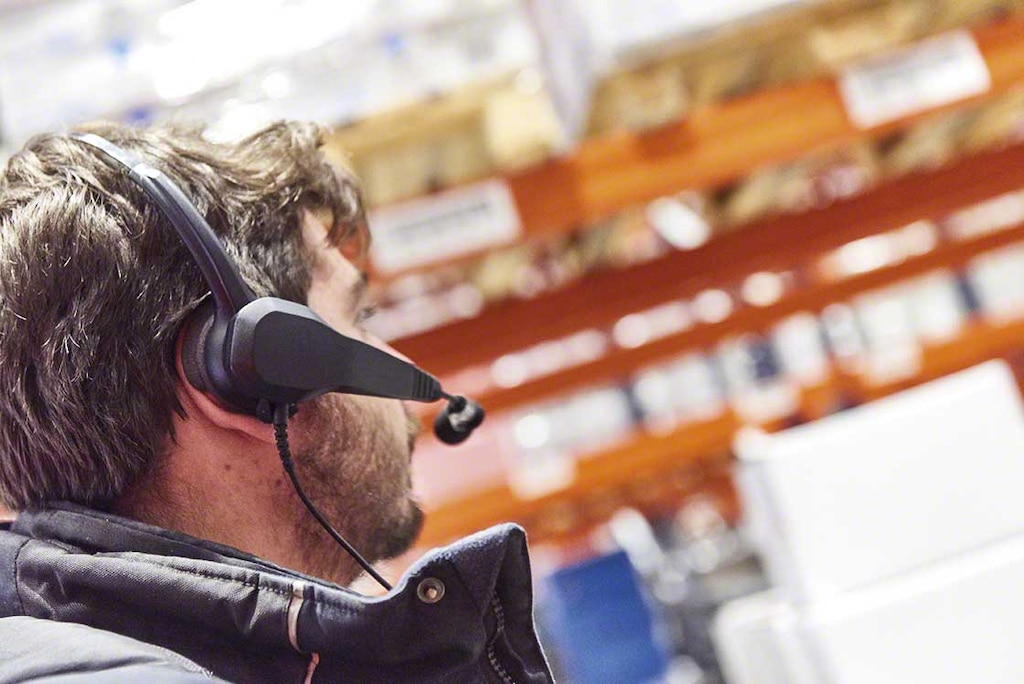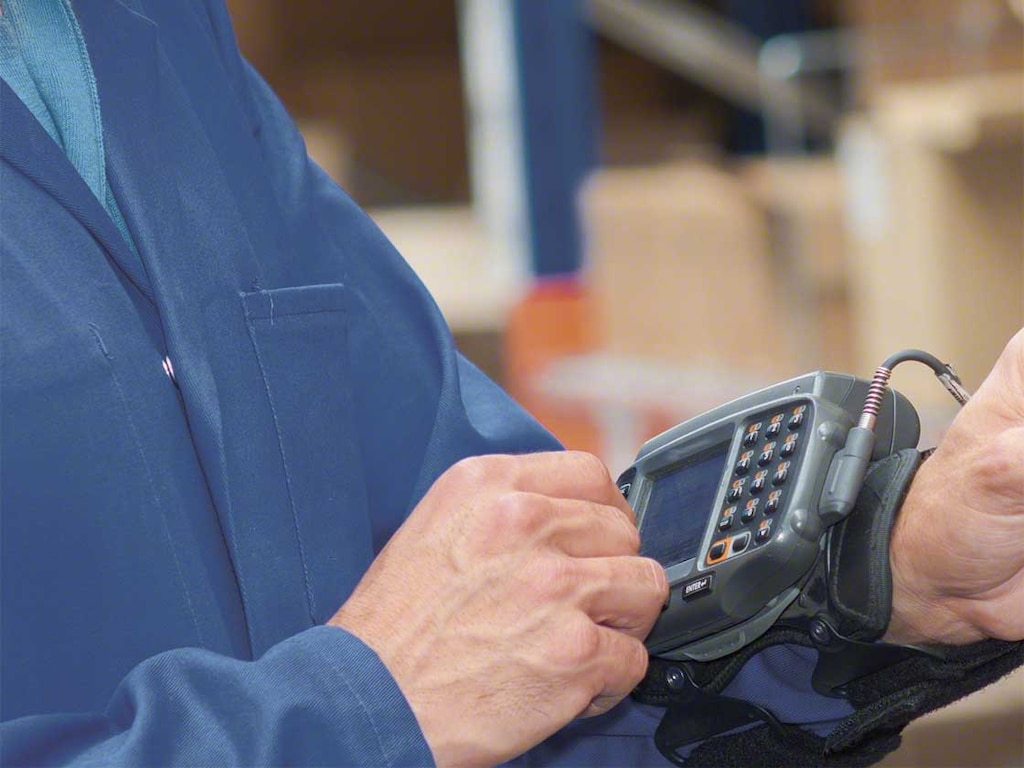
Augmented reality applications for warehouse logistics
Augmented reality applications and wearable technology have arrived in warehouse logistics and are here to stay. Against the current backdrop, in which e-commerce and omnichannel retail have burst onto the scene, companies are contemplating how to raise productivity and improve all their processes — especially order prep. It’s clear that technology is the only viable response to this challenge, as it facilitates and enhances the work of operators, enabling them to meet the increase in demand.
The wearable technology market is booming. According to a study by consulting company GlobalData, wearable tech will make strong progress in the coming years, reaching $54 million in 2023, as a result of its adoption by such sectors as healthcare, retail, and logistics.
In this post, we’ll delve into augmented reality applications and wearable technology for warehouse logistics, as well as the devices most commonly found in installations.
What’s a wearable?
Wearable technology, or wearables, consists of electronic devices usually in the form of everyday objects (watches, bracelets, rings, clothing items, and implants). These apparatuses can monitor variables with their sensors, displaying certain information or notifications to users and receiving and transmitting data via the internet.
In logistics, wearable technology collects data on warehouse and employee performance, which facilitates better decision-making in the installation.
Although still in development, augmented reality also has some applications for warehouse logistics. This technology makes it possible to see your surroundings by means of a device (smart glasses, a cellphone, or a tablet) with a layer of information that’s superimposed on the visual field.

Wearables and augmented reality hit the warehouse
Wearable technology and augmented reality have the capacity to multiply process throughput in the warehouse by making the work of the operators who perform storage and order prep tasks more efficient.
One example of an application is when the barcode reader makes it difficult to handle bulky goods with both hands. Here, wearable technology could be used to ensure that the operator’s hands are completely free, allowing him/her to pick products more comfortably.
Meanwhile, augmented reality applied to picking could significantly speed up order prep, as operators would be able to instantly see the location of the item they need to pick or the slot where they need to place a product. This technology could mean huge progress for increasingly complex warehouses that incorporate operations such as kitting and returns.
In all cases, the wearables are connected to a WMS, such as Easy WMS by Mecalux, which sends instructions to the operators. This is the same software system that manages the devices and assigns them to the corresponding users.
The power of a WMS, together with the incorporation of wearable technology, makes work in the installation much more ergonomic. Operators will merely have to follow instructions from the WMS, which means their work will be quicker, safer, and error-free.
Common warehouse wearables
Let’s take a look at wearable technology used in installations and how it can enhance the work of operators:
Voice picking
It’s one of the most widespread solutions in the market. Voice picking consists of a headset and a microphone, together with a control device (the size of a cellphone) that operators usually fasten at their waist or simply put in their pockets.
Operators receive instructions (which product to pick, where to locate it, how many items to remove, where to place the goods, etc.) via the earpiece. They then confirm that they have completed these actions by speaking into the microphone.

AR glasses
Smart glasses are extremely effective for working with augmented reality. These are glasses with a built-in camera that identifies products by scanning their barcodes. They also incorporate a virtual screen in which operators see the orders they need to prepare (which aisle to go to, how many items to pick, and where to put them).
Augmented reality streamlines all supply chain processes, particularly picking. With this operation, the workers have the pick list in their field of vision and can see where to find the product they require as they move to pick it.
Smart glasses offer numerous advantages: they’re lightweight and comfortable to wear, and they provide a sharp image.

Ring scanners
These are small devices placed on the finger like a ring (hence the name) to capture and read barcodes quickly and accurately. Although they are worn on the hand, they’re so light that operators have total mobility when handling goods.
This device consumes very little energy, ensuring excellent autonomy. Plus, the most common models on the market can be used by both right- and left-handed people (they can be given from one operator to another when changing shifts).
Ring scanners need to be connected to the WMS to record all the information collected when reading the barcodes.

Wearable computers
These are small computers worn on the arm. On the screen, operators consult the various instructions from the WMS. Thanks to the computer’s tactile interface, the workers can then confirm that the tasks have been completed in order to receive more.
It’s a very practical and intuitive system, as operators have all the information literally on their arms and can see which orders they need to carry out whenever required.
These computers can be connected to other devices. For example, they’re often combined with ring scanners so that operators can follow instructions from the WMS by looking at the screen on their arm and identify each product with the scanner on their finger. This completely frees up operators’ hands, facilitating their work and, thus, increasing their throughput.

Wearable technology in logistics
According to Zebra, one of the world’s largest manufacturers of wearable solutions and a Mecalux partner, the use of this technology can increase warehouse productivity by 15% and reduce errors by 39%.
This is possible thanks to the flexibility and mobility these devices provide. Wearables are specifically designed to free up operators’ hands so that they can easily handle goods.
The current drawback is the cost of these devices, which not all companies can take on. Plus, it’s not enough to only consider the price of the technology itself — you also have to factor in maintenance and possible repairs. What’s certain is that, as this technology starts to gain ground, it will likely become more affordable.
Equipping workers with these devices opens the door to a new reality in the warehouse: connectivity. Each operator is connected to his/her coworkers, making it possible to work together and coordinate the various tasks they have to carry out.
Part of this technology’s success comes from the perfect coordination between the employees and elements operating in the installation, which calls for a warehouse management system to orchestrate all movements. Mecalux’s Easy WMS is a benchmark WMS in the market. Get in touch — we’ll be happy to tell you about its features and how you can ramp up your productivity with wearable technology.
